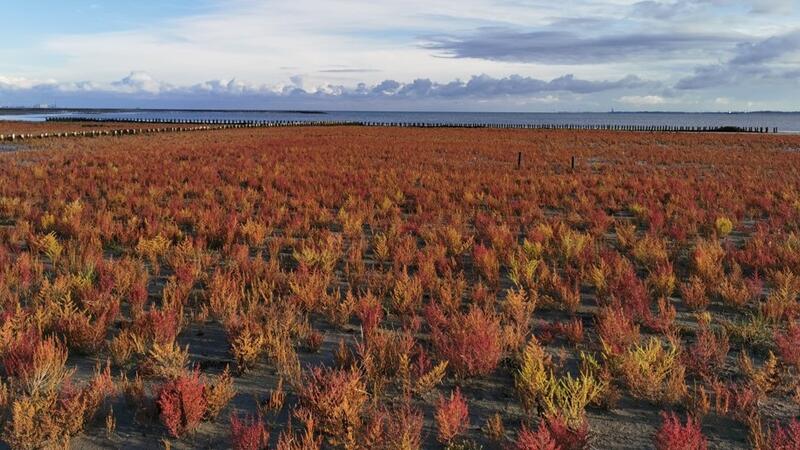Expert Group Salt Marshes and Dunes sights Marconi salt marshes

During their last meeting in October 2021, the members of the Expert Group Salt Marshes and Dunes visited the Marconi salt marshes, a salt marsh development project by Bioshape in the Netherlands. The aim of the project is to investigate how local materials and different methodologies can be used to create or restore salt marshes. Typical pionier and lower salt marsh plant types were found after the first year. While sowing seeds increased vegetation cover in the first year, comparisons between experimental plots showed that the effect was negligible in the second year. Wind and currents seem to deliver enough seeds for the vegetation to form naturally. Generally, vegetation cover differed depending on the mixture of sand and clay, with higher coverage at clay concentration of >20%. If these saltmarshes can function as a mud trap and continue to grow, they have the potential to assist with coastal defence under rising sea level. However, the visible effects that currents have on parts of the area indicates that it is important to identify suitable sites for restoring or creating saltmarsh for them to provide most benefits.
Salt marshes form the transition between land and sea and are characterized by specific plant species that can tolerate periodic flooding by saline water. The resulting unique salt marsh habitat plays an important ecological role for many species, as a feeding and breeding ground for wading birds or a nursery for fish. But it also provides important ecosystem services for humans, acting as a natural flood defence. Their potential for the sequestration and storage of carbon has created enormous attention in the last years as it may help us to moderate the global effects of climate change.
In the Wadden Sea World Heritage site salt marshes cover over 40,000 ha. While the habitat loss due to land development for agriculture or property development has slowed down, new threats have emerged. One of the most prominent one is the rising sea level caused by climatic changes. While the plant community is adapted to periodic flooding, a constant submergence in saltwater would destroy the plants. Accretion and secretion rates which are part of the natural dynamics of the Wadden Sea World Heritage site may not be able to keep track with rising sea levels. Thus, new project ideas are being developed and tested.
